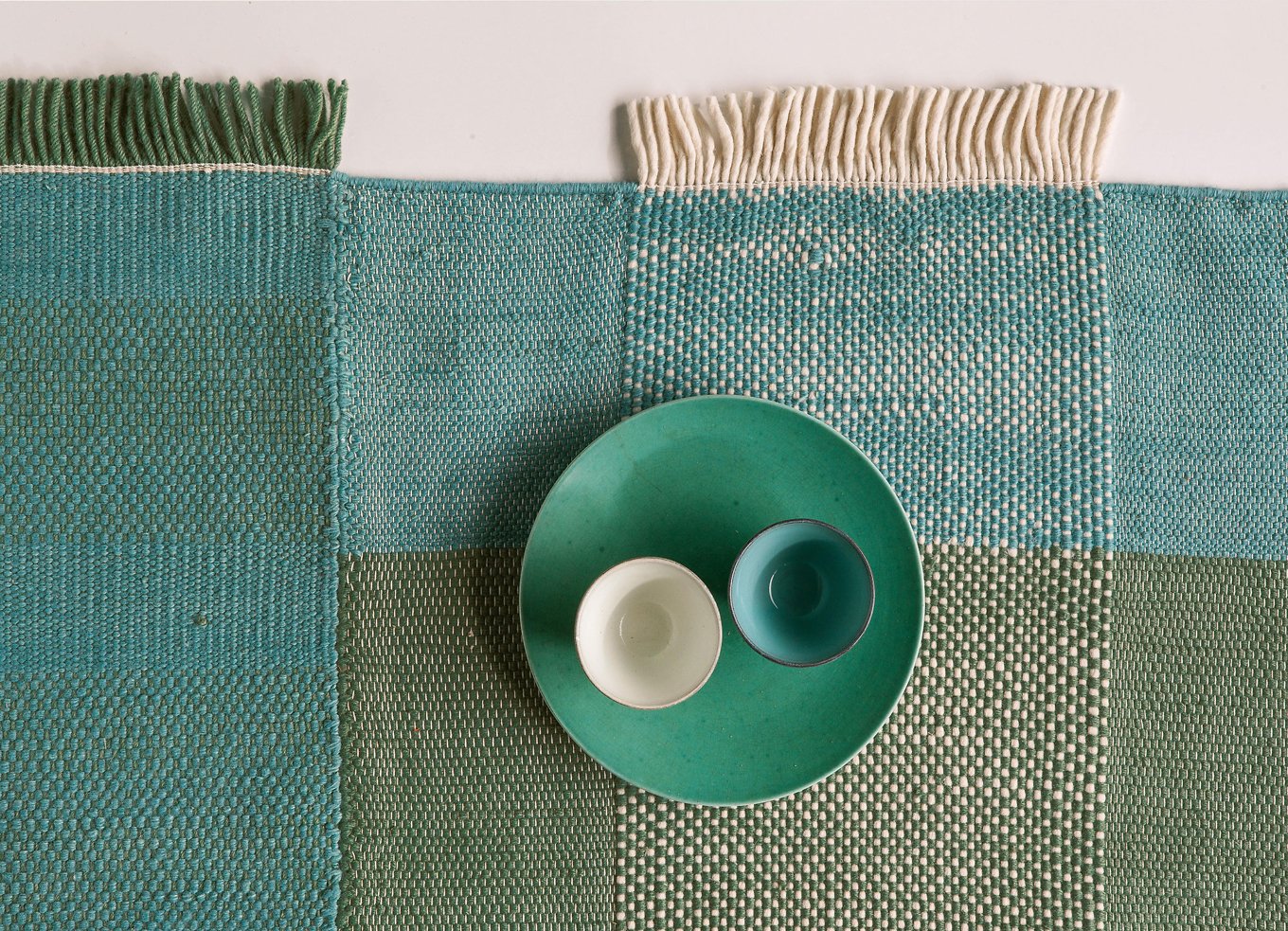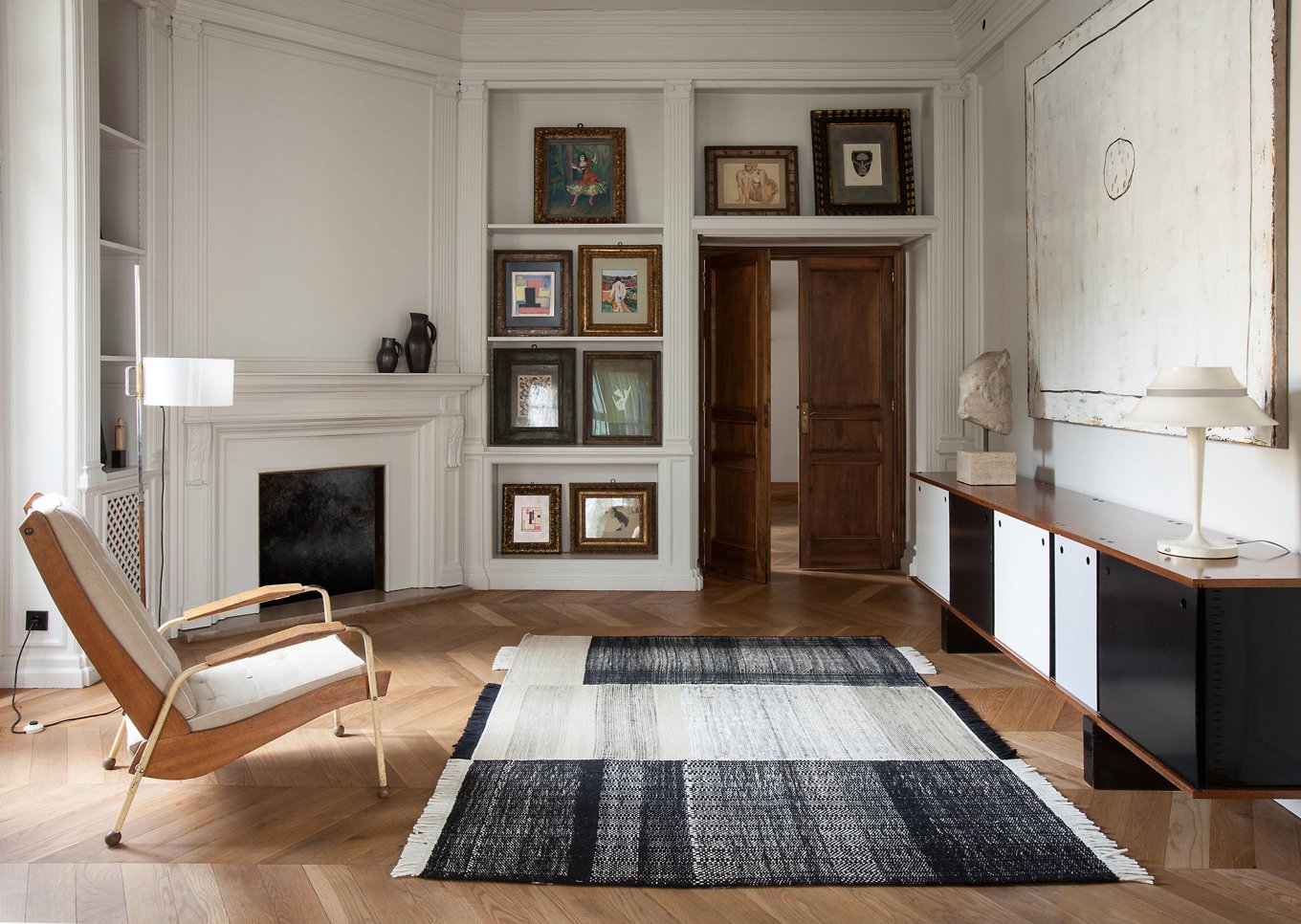Nani Marquina is a woman with a rather regal presence, and one certainly feels they are in august company when she enters the room. I had the pleasure of meeting Nani in Barcelona in the summer of 2015, during a Spanish design tour. She didn’t speak English and I didn’t speak Spanish, and so we simply smiled and nodded. Yet I was captivated by her aura and poise, and having heard her story, was full of admiration and respect.
Nani established the eponymous nanimarquina in 1987. Producing handcrafted rugs that combine traditional craftsmanship with contemporary design, nanimarquina creates pieces that exude warmth and personality. The brand attaches great importance to its social mission, working passionately to improve the lives of people living in areas where its rugs are made. In 1993, nanimarquina moved production to northern India, and works with organisations such as ‘Care & Fair’, striving to eradicate child labour and improve the health and education of artisans and their families.

Today, nanimarquina is a leading contemporary rug brand. In celebrating its thirty year milestone this year, nanimarquina collaborated with Spanish designer extraordinaire Jaime Hayon, to create the humorous and dreamy ‘Hayon x Nani’ collection. One of many unique collaborations over the years, this latest collection is a tribute to nanimarquina’s innovative approach to design, combined with a dedication to craftsmanship, tradition, quality and a zest for life.

Gessato gets behind the design with Nani Marquina.
What are five words that best describe you?
Demanding, fierce, passionate, brave, chaotic and aesthetic. (Nani is allowed that extra sixth word.)
nanimarquina just celebrated its 30th anniversary. How do you sustain the passion for what you do?
By constantly seeking inspiration. Craftsmanship is my main source of inspiration and all of its aspects fascinate me: basketry, ceramics, textiles. I believe that my passion for art and admiration of nature, define the essence of my work. Travel also encourages my work, by connecting me with the natural world. Usually, the ideas simply emerge without warning. I always have my eyes wide open and any little detail I see can inspire a new design.
What has surprised you most about nanimarquina’s evolution since 1987?
When I started this adventure thirty years ago, my mission was clear: to modernize a classic product. However, I wasn’t sure how I would achieve this, much less how far I would go. As a designer, combining creativity with the management of a company—in a self-taught way—has been the biggest challenge. A major turning point occurred in 2008, when upon receiving the National Culture Award in the Design category, I became more aware and very proud of my efforts.
The word ‘luxury’ in design is often overused and increasingly, it represents lavishness and labels. From nanimarquina’s perspective, what is luxury?
I understand craftsmanship as an art form whose foundations rest on the traditions of a community. The aim, aside from the purely functional, is to transmit stories, knowledge, culture, heritage and symbols. This is the identity of a community, village or country—its intrinsic essence. Luxury is having a unique piece in your hands, that is not mass-produced: it is one of a kind!
nanimarquina has an incredibly valuable and genuine social mission. What lessons can other brands learn from your approach?
A social mission and caring for the environment go hand in hand with our ethos, particularly in countries such as India, where this concern is not very prevalent. It is a personal decision that has to do with the organizational culture of the company, and so it’s difficult to give advice in this area.
What are some of the qualities that make a nanimarquina rug unique?
Quality is our hallmark and we refuse to lower our standards. We work with skilled craftsmen who carry out high-precision work perfectly. After production, each product is subjected to rigorous quality control, in order to ensure it is in perfect condition.
You have collaborated with many distinguished designers over the years. What do you look for in a design collaboration?
Many new ideas grow when different creative minds work together, which is so enriching. The new views that a designer can have of a rug are very useful. Typically, they don’t know the difficulties in making a rug and are occasionally more creative and more innovative as a result. Sometimes the designers contact us and sometimes we contact them. What’s really important to me as regards possible collaboration, is that the designer understands the nanimarquina culture. They must feel a bond with the company and our philosophy, and this must be the reason they wish to work with us. The balance has to be there, with those shared values.
If I can put you on the spot, what is your favourite nanimarquina rug design and why (you can of course choose one of your own)?
It’s so difficult to answer this question. During the past five years, I’ve concentrated on editing external designs in collaboration with different creators. Maybe because of this, I’m so proud of Tres, the last collection developed in-house. I am very happy with the end result, especially taking into consideration that we used a technique that was new for us: the dhurrie (flat weave). We went a step further and incorporated an innovative element that allowed us to combine different fibres (wool, felt and cotton) in each rug.
When you look at nanimarquina today, what are you most proud of?
I am most proud of the creation of products that embody our key aspects of good design: attractiveness and quality, all at a reasonable price in accordance with market demands.
When are you most happy and content?
When customers tell us how much they like and enjoy our products! A woman recently told me: ‘once I placed the rug in the living room, I realised… how could I have been able to live without it?!’
A special thanks to Lucía de la Rosa at nanimarquina for help with the translation of this interview.





